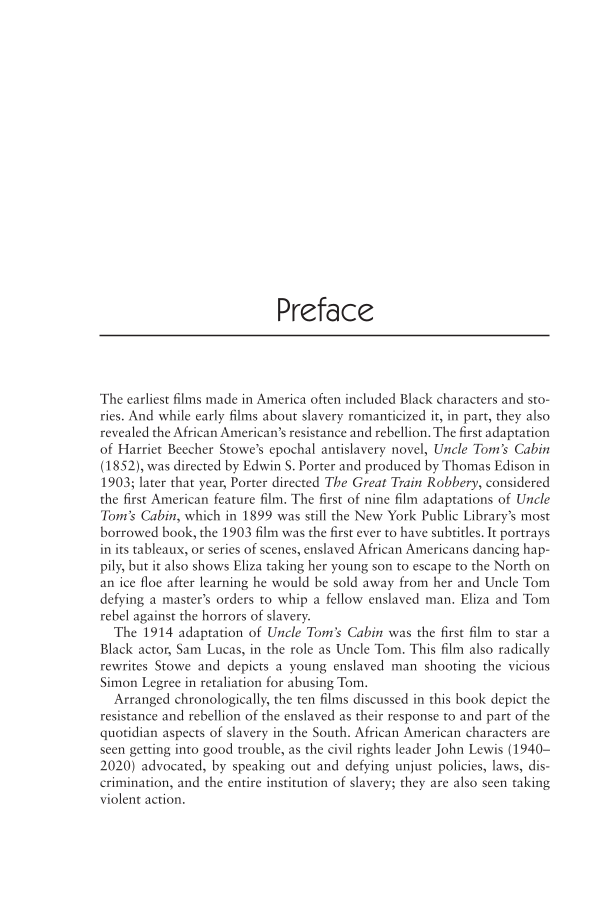Preface The earliest films made in America often included Black characters and sto- ries. And while early films about slavery romanticized it, in part, they also revealed the African American’s resistance and rebellion. The first adaptation of Harriet Beecher Stowe’s epochal antislavery novel, Uncle Tom’s Cabin (1852), was directed by Edwin S. Porter and produced by Thomas Edison in 1903 later that year, Porter directed The Great Train Robbery, considered the first American feature film. The first of nine film adaptations of Uncle Tom’s Cabin, which in 1899 was still the New York Public Library’s most borrowed book, the 1903 film was the first ever to have subtitles. It portrays in its tableaux, or series of scenes, enslaved African Americans dancing hap- pily, but it also shows Eliza taking her young son to escape to the North on an ice floe after learning he would be sold away from her and Uncle Tom defying a master’s orders to whip a fellow enslaved man. Eliza and Tom rebel against the horrors of slavery. The 1914 adaptation of Uncle Tom’s Cabin was the first film to star a Black actor, Sam Lucas, in the role as Uncle Tom. This film also radically rewrites Stowe and depicts a young enslaved man shooting the vicious Simon Legree in retaliation for abusing Tom. Arranged chronologically, the ten films discussed in this book depict the resistance and rebellion of the enslaved as their response to and part of the quotidian aspects of slavery in the South. African American characters are seen getting into good trouble, as the civil rights leader John Lewis (1940– 2020) advocated, by speaking out and defying unjust policies, laws, dis- crimination, and the entire institution of slavery they are also seen taking violent action.
Document Details My Account Print multiple pages
Print
You have printed 0 times in the last 24 hours.
Your print count will reset on at .
You may print 0 more time(s) before then.
You may print a maximum of 0 pages at a time.
















































































































































































































































